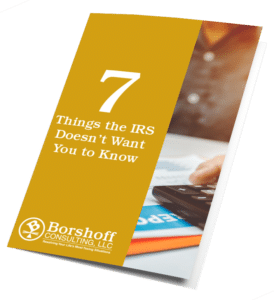The Child Tax Credit (CTC) was created to help families with the cost of having children by offering a partially refundable tax credit. For the 2020 tax year, you can claim a tax credit up to $2,000 per qualifying child. This credit has a refundable portion worth up to $1,400.
In this article, we will go over what the tax credit is, what requirements must be met in order to claim the CTC, as well as the income limitations for the tax year 2020.
Be sure to work with a qualified tax professional if you decide to take a tax credit; you should do this because there are penalties if you take the credit but are not eligible for it. A tax consultant will know all about the IRS’s rules and regulations regarding this credit, and they know the ins and outs of how to take tax credits on your tax return.
What is the Child Tax Credit?
The Child Tax Credit (CTC) is a great credit created for families with qualifying children. The credit is worth up to $2,000 per child with a refundable portion worth up to $1,400 for the tax year of 2020, but this amount depends on your income. There are specific requirements that must be met to claim this tax credit, but if you can qualify, you should definitely claim it.
Who is allowed to claim the tax credit?
United States citizens or resident aliens who file a tax return are eligible to take this tax credit if they have a qualifying child or children. However, you must meet the qualifications of having a qualifying child, as set forth by the IRS.
To be considered as a qualifying child, he or she must meet six tests: (1) Age, (2) Relationship, (3) Support, (4) Dependent, (5) Citizenship, and (6) Residence.
The Age Test
To meet the age test, the child must have been 16 years old or younger at the end of the tax year.
The Relationship Test
To meet the relationship test, the child must be your son, daughter, stepson, stepdaughter, foster child, brother, sister, stepbrother, stepsister, or descendant of any of these individuals. This would include a granddaughter, grandson, niece, or nephew. If you have adopted a child and that child has been lawfully placed with you for permanence, they would meet this requirement.
The Support Test
To meet the support test, the child must not have provided more than half of their own support during the tax year.
The Dependent Test
To meet the dependent test, you just have to claim the qualifying child as a dependent on your federal tax return.
The Citizenship Test
To meet the citizenship test, the child is required to be a United States citizen, United States national, or United States resident alien.
The Residence Test
To meet the residence test, the child must have lived with you for more than half of the tax year. There are some exceptions to this.
To learn more about the requirements associated with the Child Tax Credit, check out IRS Publication 972: Child Tax Credit. For more information on who qualifies as a qualifying dependent, according to the IRS, you may wish to reference Claiming Dependents: Your How-to Guide.
How much is this tax credit worth?
The Child Tax Credit is worth as much as $2,000 per qualifying child under the age of 17. If you have several children under the age of 17, the Child Tax Credit could prove to be quite valuable to you. This information is current for the tax year 2020.
The good news is that if you have qualifying children aged 17 to 18 or college-age students who are 19 to 24 years old, you may be able to receive a nonrefundable credit of up to $500 for each older child. Those dependents who are in school must be going full time at least five months of the tax year.
According to the Tax Policy Center, older dependents, such as college students aged 19 to 24, account for about 6% of the dependents who are eligible for the Child Tax Credit.
How does the tax credit work when filing your taxes?
You can claim the Child Tax Credit for each qualifying child under the age of 17. The tax credit is reduced by 5% of adjusted gross income over $200,000 for single parents and $400,000 for those who are married.
This is a refundable credit, which is very good news if you qualify for a tax refund. Basically, the way it works is if the tax credit exceeds your tax liability, you may be able to receive up to $1,400 of the balance as a tax refundable. This refund is also called the Additional Child Tax Credit, and it’s limited to 15% of earnings that exceed the limit of $2,500.
The refundable portion of this tax credit is $1,400 for the 2020 tax year. This means if the credit exceeds what you owe on your tax return, you may be eligible for a tax refund of up to $1,400.
What else should I know about this tax credit?
Understand that the Child Tax Credit is limited to your modified adjusted gross income. The amount used to determine when this phaseout begins depends on your filing status.
If you are filing your 2020 tax return, this table should help you understand the income limitations for this credit.
| Filing Status | Maximum AGI for the CTC | AGI When the CTC Goes Away |
| Single | $200,000 | $240,000 |
| Married Filing Jointly | $400,000 | $440,000 |
| Head of Household | $200,000 | $240,000 |
| Married Filing Separately | $200,000 | $240,000 |
Additionally, the Child Tax Credit is limited by the amount of tax you owe the IRS, as well as any alternative minimum tax you owe.
Keep in mind that you may qualify for the Additional Child Tax Credit. Basically, if the amount of your Child Tax Credit is more than the amount of tax you owe, this additional credit becomes an option.
There are many other tax benefits for working families with children, too. There is the Child and Dependent Care Tax Credit and the Earned Income Tax Credit.
It’s a smart idea to work with a qualified tax consultant when trying to take tax credits because they know the relevant tax rules and requirements and can make sure you get the most out of your federal income tax return.
What is the latest information regarding this tax credit?
It’s a good idea to take advantage of tax credits like this because laws change all the time. According to the Tax Policy Center, after 2025, the Child Tax Credit is scheduled to revert to the way it was before the Tax Cuts and Jobs Act. This means that you will only be able to claim a tax credit of up to $1,000 per qualifying child under the age of 17.
Also, the Child Tax Credit will be reduced by 5% of your adjusted gross income over the amount of $75,000 for single parents and $110,000 for married couples. This will happen after tax year 2025. The new rules will change the Additional Child Tax Credit to 15% of earnings that exceed $3,000. While these new rules aren’t in effect now, it’s a good idea to know what’s to come.
Conclusion
Do you have questions about the Child Tax Credit or need help filing your annual tax return? Are you confused about which tax credits you are eligible for and how many credits you are allowed to take? Don’t worry; this is a normal feeling for taxpayers trying to take tax credits.
At Borshoff Consulting, we offer tax consultations and other assistance. Did you know that we can represent you in the event of an audit? Our tax specialist will gladly help you achieve the maximum tax benefits on your annual tax return.
Please contact us today to learn more about the services we can offer you. We are happy to offer a free tax consultation. You can trust Indiana’s tax expert!





